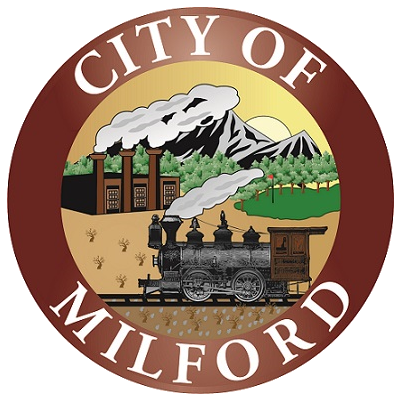Welcome to Milford Utah
Since Milford is 30 miles west of Interstate 15 it has remained unknown to many Utah travelers. Although it has a small-town feel, Milford is no stranger to big business. Once dominated by the Union Pacific Railroad, the town is now the headquarter for the Smithfield Foods hog operation.
Population
1,451
Elevation
4,968 feet
History
Milford is located in a broad valley a few miles east of the geographical center of Beaver County. Originally, Milford was nothing more than a few shacks built on the hills near mines under excavation. Many of the miners who first came to Milford left within a few years after trying their fortune, but others came to stay. Arvin Stoddard was the first settler of the area, claiming 160 acres of land in 1880, building the first house in the area, and planting the first trees. During this same time, prospectors were searching the hills to the west and southwest for lead, silver, and gold. A Welsh smelter man, John D. Williams, came to Milford in 1880. He eventually built a smelter on land adjoining the Stoddard claim. Some contemporaries described Milford as a "perfect mudhole," or the "perfection of desolation."
Cattle-raising was also important in Milford's development. In the early 1870s three brothers settled at Pine Grove in Pine Valley west of Milford and established a cattle ranch. Within a few years several cattle companies had stock grazing in the land surrounding Milford. B.F. Saunders of Salt Lake City owned Utah's largest cattle herd--the Pike Springs Ranch--and he made Milford his shipping point. Cattle grazing was possible on nearby public domain land year-round. Meadow grass covered the Beaver and Milford valleys from Hay Springs to Black Rock and supported as many as 20,000 head of cattle and 5,000 head of horses.
During the 1880’s Milford became the railroad terminal for the Southern Utah Line, and it was particularly important as a loading place for the cattle of southern Utah. The railroad also enhanced Milford's importance as a supply station and the shipping center for local mines; it also facilitated trade with regional markets. Milford became the terminus for freighting activities for a region that included southern Utah, southern Nevada, and northern Arizona.
The railroad attempted three different times to extend rails from Milford to California. In 1881 work was begun on the roadbed but was quickly abandoned. In 1890 a second attempt was cut short by the national depression. The third attempt, in 1898, was successful and resulted in a line to Caliente, Nevada, by 1901. Milford was a valuable division terminal because of its excellent location and water facilities.
At the turn of the century, Milford had a population of 279, and in 1903 these inhabitants petitioned the county commission for incorporation. This facilitated both the codification of local ordinances and the unified planning for growth. Milford's Main Street was characterized by its simple frame architecture typical of mining towns. Saloons, boarding houses, and mercantile outfits lined both sides of the street. As might be expected, the town was plagued by fire and many structures burned to the ground from time to time.
In an article published in the Deseret News on 8 November 1914, Joseph Hickman claimed that "Milford has been Utah's most thorough representative of all types of frontier life." This statement describes the diverse nature of Milford's social, cultural, and economic life. Established first to service local mines, it quickly became an agricultural and stock-raising center of significance. This diversification is what allowed Milford to survive the closure of the mines, local smelters, and the slow-down of the mining industry.
Milford City Governmental Offices
26 South 100 West
Milford, Utah 84751
Mailing Address
P.O. Box 69
Milford, Utah 84751
Telephone Numbers
435 387-2711
435 387-5070
Fax 435 387-2748
|
Office Hours |
8:00 a.m. - 4:00 p.m. Monday through Friday, excluding holidays |
|
Meeting Dates |
Third Tuesday, 4:00 p.m. |
|
Population |
1,451 |
|
Classification |
Fifth Class City |
|
Form of Government |
Manager by Ordinance |
|
Incorporation Date |
November 30, 1903 |
